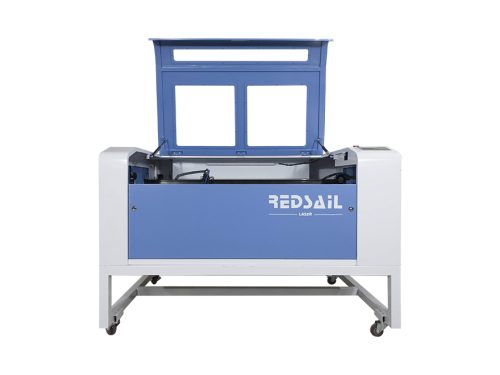
Metal laser cutting machine is a machine and equipment that uses laser technology for cutting. Nowadays, many metal processing factories use laser cutting machines to cut metal. Laser is a very powerful beam of light that can be released and quickly cut in a short time. Metal laser cutting machine is mainly used for fast cutting various metal materials such as carbon steel, silicon steel, stainless steel, aluminum alloy, titanium alloy, galvanized plate, aluminum zinc plate, copper, etc
Metal laser cutting machines are used in various manufacturing and processing industries such as sheet metal processing, aviation, aerospace, electronics, electrical appliances, subway accessories, automobiles, machinery, precision accessories, ships, metallurgical equipment, elevators, household appliances, craft gifts, tool processing, decoration, advertising, and so on.
So, what is the principle of a metal laser cutting machine? What are the classifications of metal laser cutting?
Below, please see the principle and classification analysis of metal laser cutting machines:
Principles of Metal Laser Cutting Machine
Laser cutting uses a focused high power density laser beam to irradiate a workpiece, rapidly melting, vaporizing, ablating, or reaching the ignition point of the irradiated material. At the same time, it uses a high-speed airflow coaxial with the beam to blow away the molten material, thereby achieving the cutting of the workpiece. Laser cutting is one of the thermal cutting methods.
Classification of metal laser cutting
Laser cutting can be divided into four categories: laser vaporization cutting, laser melting cutting, laser oxygen cutting, and laser scribing and controlled fracture.
Category advantages of metal laser cutting machines
Laser vaporization cutting: Using a high energy density laser beam to heat the workpiece, the temperature rises rapidly, reaching the boiling point of the material in a very short time, and the material begins to vaporize, forming vapor. These vapors are emitted at a high speed, forming a cut in the material as they are emitted. The heat of vaporization of materials is generally large, so laser vaporization cutting requires significant power and power density. Laser vaporization cutting is mostly used for cutting extremely thin metal materials and non-metallic materials.
Laser melting cutting
Use laser heating to melt the metal material, and then spray non oxidizing gases (Ar, He, N, etc.) through a nozzle coaxial with the beam of light. Relying on the strong pressure of the gas, the liquid metal is discharged, forming a cut. Laser melt cutting does not require complete vaporization of metal, and requires only 1/10 of the energy required for vaporization cutting. Laser melt cutting is mainly used for cutting materials or active metals that are not easily oxidized, such as stainless steel, titanium, aluminum, and their alloys.
Laser vaporization cutting
Using a high energy density laser beam to heat the workpiece, the temperature rises rapidly, reaching the boiling point of the material in a very short time, and the material begins to vaporize, forming vapor. These vapors are emitted at a high speed, forming a cut in the material as they are emitted. The heat of vaporization of materials is generally large, so laser vaporization cutting requires significant power and power density. Laser vaporization cutting is mostly used for cutting extremely thin metal materials and non-metallic materials.
Laser oxygen cutting
Use a laser as a preheating heat source, and use active gases such as oxygen as cutting gases. On the one hand, the injected gas reacts with the cutting metal to produce an oxidation reaction that emits a large amount of oxidation heat; On the other hand, molten oxides and molten substances are blown out of the reaction zone, forming a cut in the metal. Due to the large amount of heat generated by the oxidation reaction during the cutting process, the energy required for laser oxygen cutting is only 1/2 of that for melt cutting, and the cutting speed is far greater than that of laser vaporization cutting and melt cutting. Laser oxygen cutting is mainly used for oxidizing metal materials such as carbon steel, titanium steel, and heat treated steel.
Laser scribing and controlled fracture
Using a high energy density laser to scan the surface of a brittle material, the material is heated and evaporated into a small groove. Then, applying a certain pressure, the brittle material will crack along the groove. The lasers used for laser scribing are generally Q-switched lasers and CO2 lasers. Controlled fracture is the use of the steep temperature distribution generated during laser grooving to generate local thermal stress in brittle materials, causing the material to break along small grooves.
The above is an introduction to metal laser cutting machines.










